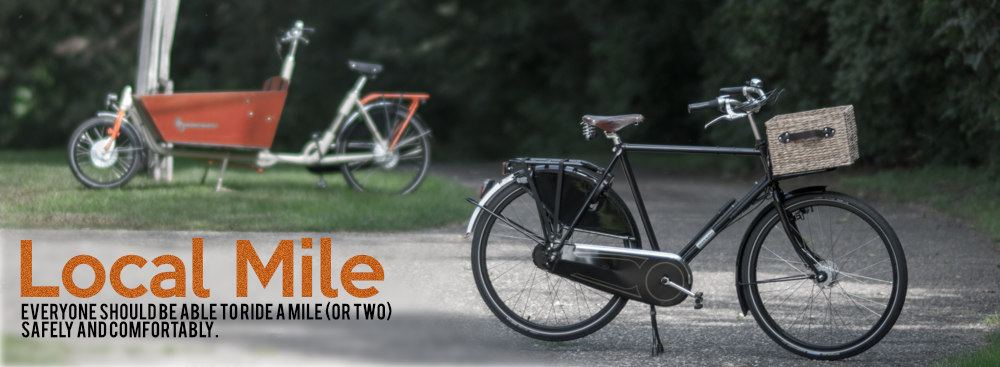[Read Time: 9 minutes ]
Why would anyone want to sit in a 200°f room for 15 minutes and then go jump through a hole in the ice of a frozen lake? And then do it again? And again?
Because, as one friend told me, ’its the best legal high you can ever get!’ There’s a reason that over half the populations of Finland, Sweden, Germany and other countries sauna so often.
For the fullest enjoyment of sauna, for us individually and others, it’s important to understand sauna. Hopefully this will provide a good, somewhat brief and beneficial introduction.
If you’re anxious to just get to the sauna then skip down to ‘Going To Sauna’.
Introduction
Sauna is about contrasts. The contrast of hot vs cold, of inside vs outside, of calming, quiet, relaxing and rejuvenating vs our daily life. And with Finnish Saunas of low humidity vs high humidity. We cycle between sauna and daily life, and within sauna we cycle between heat inside the steam room and cold outside, and within the steam room of a Finnish Sauna we cycle between dry and humid.
Finns will frequently say that sauna is the second holiest place next to church (and that we should behave similarly quietly and calmly in each).
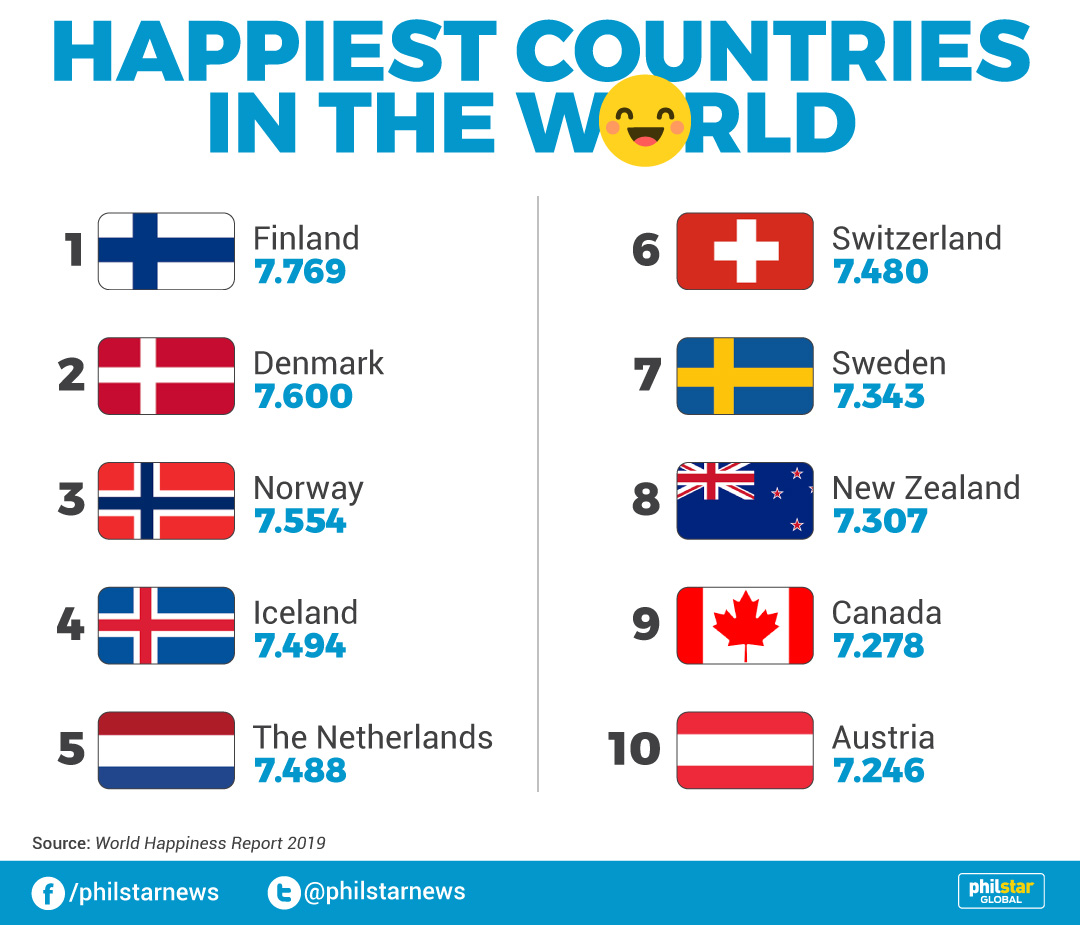 Why sauna? Primarily for enjoyment. There are some proven health benefits that come along with it though.
Why sauna? Primarily for enjoyment. There are some proven health benefits that come along with it though.
Sauna is Social. While quite enjoyable alone it is most wonderful with others. Time in the sauna is often a key part of having friends and family over. Many people in Europe who have a sauna at home will still take time each week for a few hours at a public sauna zone – for the broader social enjoyment as well as for the variety of thermal experiences.
It is called sauna bathing because we are bathed in soft convective heat – we are fully immersed in this gentle heat, and it is truly cleansing. After a round of sauna and a dip in the lake or under a shower our skin is as clean as it’ll ever be. A few hours of sauna rounds also cleanses us mentally and perhaps spiritually.
What Is Sauna?
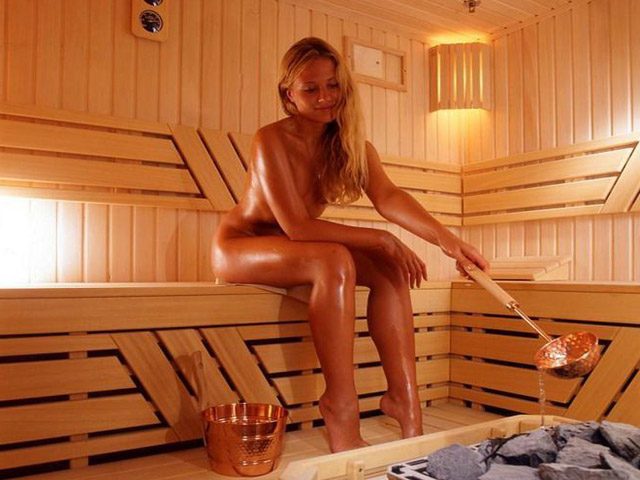 Sauna (verb) is the practice of sitting or laying in a sauna hot room for a short period of time, typically 10-15 minutes, and then cooling off in a lake, shower, roll in the snow, standing outside, relaxing in a cool room or whatever you desire. Then resting for a bit, rinsing under a shower …And then Repeating as often as you want.
Sauna (verb) is the practice of sitting or laying in a sauna hot room for a short period of time, typically 10-15 minutes, and then cooling off in a lake, shower, roll in the snow, standing outside, relaxing in a cool room or whatever you desire. Then resting for a bit, rinsing under a shower …And then Repeating as often as you want.
Sauna should be physically and mentally enjoyable, relaxing, invigorating and meditative.
Sauna is not a jump in the hot room once and then go shower. It’s taking our time for an invigorating ritual of hot cold hot cold hot cold.
What Is A Sauna?
A Sauna (noun) is a wood lined room, typically with stepped benches, in which bathers experience a hot air bath of soft convective heat that evenly envelopes our entire body. This convective heat, about 80-105°c (176-221°f), is created by air flowing over stones in the sauna heater.
Though sauna’s are naturally very dry, water, steam and humidity are critical elements. In a Finnish sauna bathers throw water on to the stones to create bursts of steam to temporarily raise the humidity. Bio-Saunas are similar except these have a more constant moderate humidity and slightly lower temps.
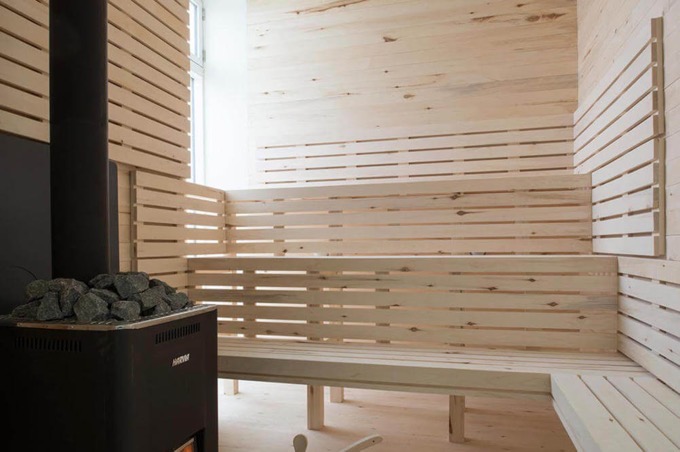
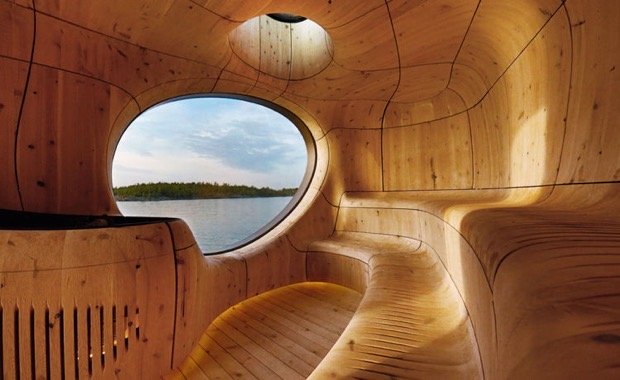 The soft woods chosen for the walls, ceiling and benches are not aesthetic so much as functional. The hygroscopic properties help to regulate the heat and moisture for a softer and less harsh heat. The wood helps to absorb noise for a quieter, more peaceful and less annoyingly echoey space and soft wood is not as hot to touch.
The soft woods chosen for the walls, ceiling and benches are not aesthetic so much as functional. The hygroscopic properties help to regulate the heat and moisture for a softer and less harsh heat. The wood helps to absorb noise for a quieter, more peaceful and less annoyingly echoey space and soft wood is not as hot to touch.
When on the sitting bench (highest bench) we want all of our body above the top of the stones. This is why the benches are so high. Finns have a saying ‘feet above the stones’ meaning that the foot bench (second to highest bench and where our feet are) should always be above the top of the stones. Being up above the stones results in a softer, more even, comfortable and enveloping heat and steam around our entire body, a key element of what Finn’s call löyly.
If the benches are lower, as is common in America, we’ll experience uneven heat – hotter and steamier near our head and not so hot and steamy around our feet, hotter on our front facing the heater and not as hot on our back. People in Europe call this ‘Cold Feet’ which should always be avoided.
Good continuous ventilation to maintain fresh air and remove impurities like CO2 is a critical element.
One final point. IR cabins are not in any way a sauna, despite what American marketing people say.
Building or Buying a Sauna? Check out Trumpkin’s Notes On Building A Sauna, Kit Sauna Reviews, Notes on Barrels and Notes on IR Booths.
Löyly
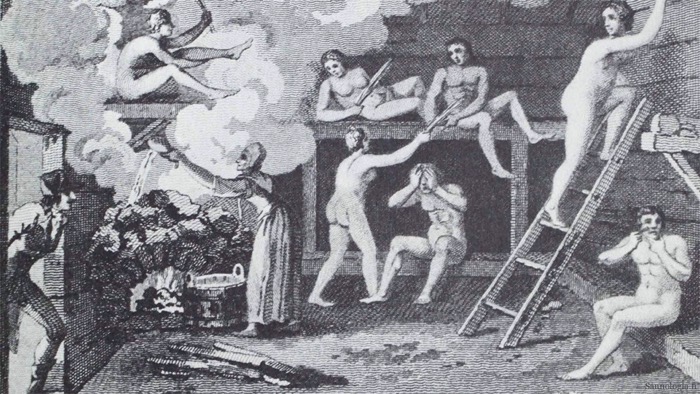 Löyly (pronounced kind of like ‘l – eu -i -loo’. Almost like Lou-Lou but more nuanced.) is a special word in Finnish for the environment in a sauna. It is “the purity, freshness, temperature and humidity of the air in the sauna”.
Löyly (pronounced kind of like ‘l – eu -i -loo’. Almost like Lou-Lou but more nuanced.) is a special word in Finnish for the environment in a sauna. It is “the purity, freshness, temperature and humidity of the air in the sauna”.
- The air in a sauna should always be fresh, not stale. It should be pure air with no excess CO2, particulate matter, chemicals such as chlorine, perfumes, detergents, mold, or cleaning products.
- Bather’s bodies should be evenly enveloped in convective heat from head to toe, front to back and second to second with no noticeable radiant heat.
- The temperature about 80-105°c at bathers heads. …Or 70 or 120°c if that’s your preference.
- Steam from the stones is a critical element of löyly and so the environment in the sauna is not considered löyly until this steam has been added. It is not unusual for people to shout ‘LÖYLY!’ when this is done (and is perhaps the only way to elicit verbiage from a Finn:-).
There is a popular saying among Finns, Swedes and others that “90% of the saunas in the U.S. are bad and the other 10% are worse” – that not a sauna in the U.S. has löyly. Sadly this is largely true and is referring to lack of proper fresh air ventilation (that results in suffocatingly high CO2 levels) and temps and benches that are too low. Once you’ve experienced proper sauna and löyly you’ll never want to go back! Fortunately U.S. saunas are starting to improve.
Fun Stuff: The image above from 1799 is by Giuseppe Acerbi who added himself as the clothed intruder, holding the door open, letting in cold air and letting out heat and steam.
Community In A Sauna
Sauna provides for a very unique, wonderful and beneficial social community. Almost like a third-space on steroids and one in contrast to much of our daily lives.
The atmosphere of total relaxation and genial sociability which prevails in the sauna provides an opportunity to approach many different aspects of life, and encourages open discussion of diverse topics.
– Antti Arstila
We are all equal and if nude equally vulnerable. Nobody is greater or lessor than any other. There is no gender, status, rank, hierarchy or wealth in a sauna. There is no pretense. Nobody cares how much money you make or if you’re overweight or skinny. We are reduced to our most basic humanness.
We are all sharing this rather small space. For this to work well requires a high degree of regard and consideration for others.
We are sitting still and quiet.
This provides a natural and unique opportunity for quiet conversation and interaction that doesn’t happen anywhere else. Even when there is no conversation there is acknowledgement of each others presence and that we are all in this together for our mutual community benefit.
In Continental saunas (Germany, Austria, etc.) it is considered proper etiquette that everyone in the sauna be able to participate in any conversations – that nobody be excluded. If two friends are in a sauna alone they may discuss whatever they like in whatever language they prefer. If a third person joins them then the conversation should be something that all three can understand and converse on. It’s also not unusual for the language to change, often to english, if someone enters who is known to not speak the local language.
Going To The Sauna
Going to the sauna should be relaxing and enjoyable and can be solitary or social. It is NOT A CONTEST. It is not a regimen to be endured.
A lot of the enjoyment and health benefits of sauna come not from just sitting in the sauna hot room but from the repetitive rounds of heating up and quickly cooling down. We sit in the sauna for the experience of quickly cooling down in a cold lake, not just for the experience of sitting in the sauna.
Finns will often say that anything short of Hot Cold Hot Cold Hot Cold (3 rounds) is not really sauna. This is perhaps the number one thing about sauna that we often miss. People in American gyms will get in the sauna for a bit and then take a warm shower. Or maybe do one cold plunge and then a warm shower. That’s not really sauna according to Finns, Swedes and others.
The hot room and time in it is actually fairly minor. Other places and elements like a dip in the lake, a walk in the snow or a cool shower often comprise more sauna ritual time than the hot room. We should allow at least one and ideally two to four hours or more per sauna session so that we have time to enjoy multiple rounds in a relaxing way without feeling rushed.
Sauna Etiquette
The key to sauna etiquette is consideration for others.
- Rinse off or shower before each round (with soap the first time).
- No sandals or flip flops on the benches – clean bare feet only.
- If not nude then wear as little as possible (to reduce bacteria growth, BO and other contaminants).
- No earphones. In the sauna is a community that we should not separate ourselves from.
- Open the door only as much as necessary and close it quickly so heat doesn’t escape nor cold air freeze others toes!
- Sit on a towel (even if wearing a swimsuit) so we don’t leave any sweat on the bench.
- You can also have your towel extend to under your feet.
- Ask others before throwing water on the stones!
- Only fresh clean water, optionally with natural infusion oils, may be thrown on the stones.
- In the sauna talk and behave quietly and calmly – as you would in church.
- Politics and religion should generally be avoided unless only with close friends and family.
Sauna Routine
What we do and how we do it is important to both enjoyment and gaining any health benefits.

1) Prep – Before Sauna:
Hygiene Before Heat – Or ‘first shower, then sauna’. Shower with soap before entering the sauna for the first round and then rinse well. As my father-in-law would say “as far down as possible, as far up as possible …and possible”.
For ourselves and others we want to always be as clean as possible each time we enter the sauna.
Why shower if we’re just going to get sweaty? Bacteria. Our bodies can build up a significant amount of bacteria (it’s the primary ingredient in BO) and we don’t want to carry this in to the sauna. We also want rid ourselves of any makeup, chlorine, sunscreen, cologne, dirt or other gook.
This is especially important if we have suntan lotion on or have been in a chlorinated pool or hot tub. We (and our sauna mates!) want our skin and pores to be as clean as possible.
Drink! It’s a good idea to wait a couple of hours after a meal but a light snack just before sauna is fine and some water is critical. Many Scandinavians will drink beer or Finnish Long Drink during their sauna sessions and roasting sausages on the stones is a Finnish tradition but these are totally optional. Be cautious of alcohol though as drunk + sauna is not a good thing.
If wearing a swim suit then it should be freshly clean and not have been in the hot tub or any other chlorine source.
ALWAYS wipe your feet well before entering the sauna to keep the benches clean (and NEVER wear sandals in to the sauna).
2A) In The Sauna (5-20 minutes):
Always sit on a towel, even if wearing a swimsuit.
Sauna is typically done nude but swimsuits are acceptable in North America for those uncomfortable with nudity (for more: Sauna’s, Nudity and Victoria)
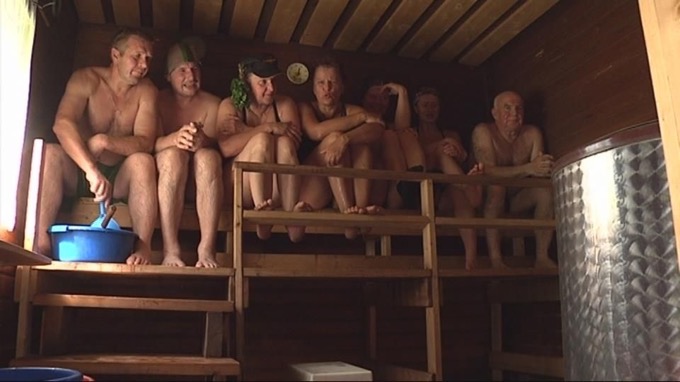
Stay in as long as you are comfortable and leave when you want – or when jumping through a hole in the ice sounds like a really great idea.
In Scandinavia children are taught “in the sauna you must be as quiet as in church”. Quiet conversation is wonderful as is sitting in total silence.
Steam (the final element of Löyly) – Steam in a well designed sauna is quite wonderful as you feel it envelope your body in its caressing warmth.
Ask others before throwing water on the stones. It’s impolite to throw water on the stones and then leave or for anyone to open the door for the first two or three minutes after throwing water on the stones).
CLOSE THE DOOR! Finns have a number of special epithets for those who open the door too wide or keep it open too long.
2B) Cooling Down, Rinsing and Resting (5-60+ minutes):
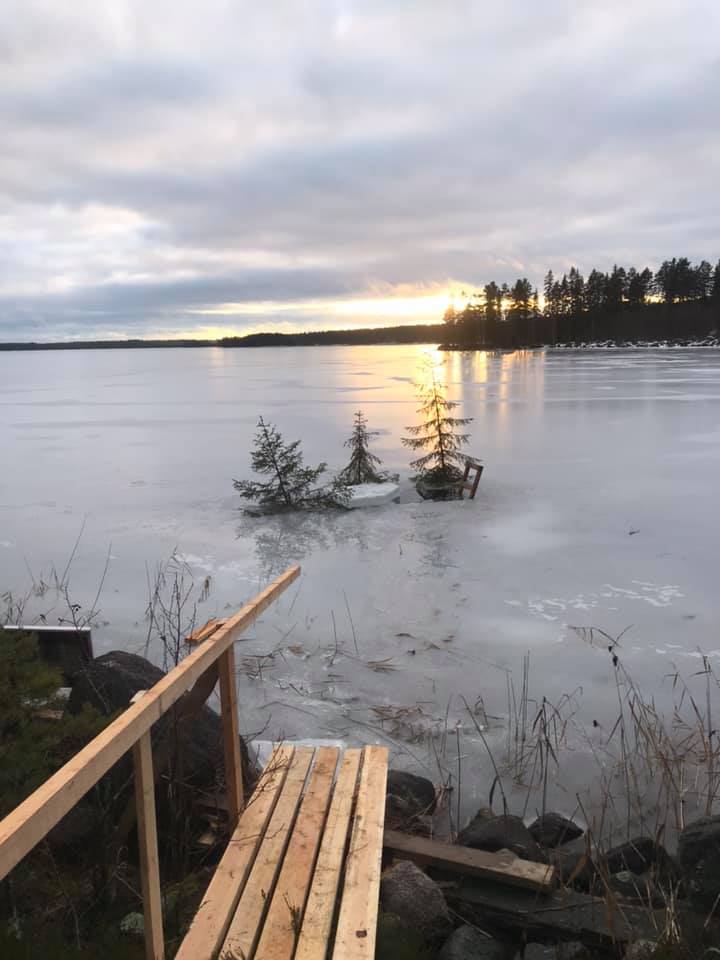 Go jump in a lake! Really. No matter how cold it is. If it’s frozen we’ll cut a hole in the ice (and maybe plant a warning tree forest like my wife’s cousins Mikael and Maria do in Sweden)*.
Go jump in a lake! Really. No matter how cold it is. If it’s frozen we’ll cut a hole in the ice (and maybe plant a warning tree forest like my wife’s cousins Mikael and Maria do in Sweden)*.
My friend Kimmo (SaunaSherpa – check them out for a tour) notes that Finns even have a special word for a hole in the ice to go swimming in – Avanto! Not to be left out, Swedes have their own word for a swimming hole in the ice – Isvak! Kimmo adds “A slight push outside one’s comfort zone can be intimating – both in sauna, as well in avanto to get deeper sensations. For avanto first timers: enter steady, determined, stay calm, remember to breathe(!), Hardly anyone enjoys staying in the water but jumping in is worth it as bliss/euforia comes as a reward afterwards.” He also notes that some people never get fully use to it.
Feeling a bit of trepidation on your way to the lake, like this is going to be cold and I’m nuts for doing this, is a good thing. That means that you’re in for a treat. It’s indeed a bit intimidating but well worth it.
BTW, jump in feet first, even if you’re a good diver. It’s much better to let your lower body hit the water first than your head.
Ideally you want to preserve as much sauna warmth in your body as possible when you jump in the lake. Taking a cue from a firefighter friend, I always hang my swimsuit with strings up so I can get in it quickly (yeah, good idea to pull a swimsuit on before heading to the lake during daylight hours in North America) and I’ll wrap my drying towel around my shoulders for the trip down, even when it’s 34°c (94°f). A terry cloth robe can work better, especially in winter.
Next best is perhaps a cold plunge pool. Large enough that you can easily get your whole body in quickly. Personally I’ve found 12-18°c (53-64°f) to be about ideal and this is also the temp found at most spas in Europe. Well, actually 16-18°c seems most common and for enjoyment that is kind of ideal. I’ll still jump in colder than 12°c and while still enjoyable, not as much for me personally as a bit warmer. The heat shock protein folks say that it should be below 12°c – however; 1) I’m doing it mostly for enjoyment, 2) health benefits are mostly a bonus for me, and 3) the benefits of such cold temps so far appear theoretical rather than proven.
Or go under a cool shower. You ideally want to cool off quickly. Yep, it’s a bit shocking for 2 seconds and then you feel great. If you’re a loofa person this is ideal loofa! Two to five minutes under the shower and then walking outside to dry off and finish cooling down is a wonderful experience.
Fun Stuff – When you shower after your first round you may smell some body odor. This is not sweat (sweat doesn’t smell) but bacteria in your skin that soap didn’t remove (and possibly bacteria from soap). You’ll not smell it after further rounds!
If it’s below about 40-50°f… sandals outside are a good thing.
If it’s below about 10°f (-13°c)… drying off before going outside is a good idea. Be careful grabbing cold metal door handles with wet hands. And yes, that is ice in your hair.
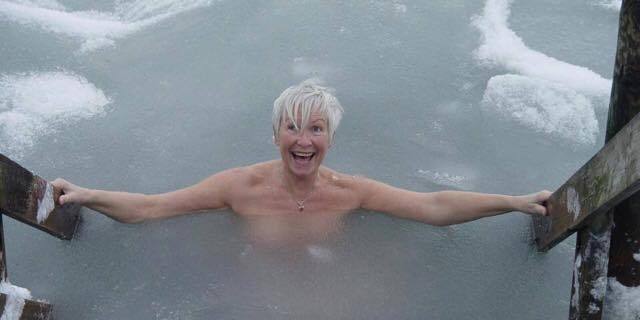 A great experience is lake water about 40°f (4°c) and air 20-40°f (-6°c – 4°c) but almost any weather will do.
A great experience is lake water about 40°f (4°c) and air 20-40°f (-6°c – 4°c) but almost any weather will do.
Remember to take a few deep breaths of fresh air while you’re outside.
The first round is kind of an acclimatization round. Your body is relaxing and waking up at the same time, your pores are opening. In a well designed sauna with good ventilation the subsequent rounds will get better and better with each round.
When doing any kind of a cold plunge – sea, lake, shower, tub or bucket of water – a key is immediate immersion if possible.
2B – Part II) Shower After The First Round (Before Pool):
Our first round rids us of a lot of bacteria so it’s good to rinse well in a shower immediately after our first round and before entering any pools. It’s OK to go directly to a lake or sea though.
If we are nude and otherwise practicing good hygiene then for rounds after the first we can usually go directly to a plunge pool as any bacteria on our body will be minimal. Some facilities may still want you to shower first so ask the staff and watch to see what others do.
2C) Hydrate
Hydrate with every round. Or not. Some people believe it’s best to hydrate well before your session and then not again until after all of your rounds. Personally I think it best to drink a bunch of water with each round.
2D) Repeat:
Repeat as often as you want. Three rounds is kind of the average but two, seven or whatever is OK. Even occasionally doing just one round is fine.
In Finland and elsewhere it’s not unusual, especially at a lake cabin, to spend pretty much an entire day going back and forth to the sauna. It’s kept ready all day and in to the night for whomever wants to use it. I can be quite content spending an entire day at a spa or sauna world doing visits to a Finnish Sauna, Bio Sauna or Steam Room every 30 – 90 minutes and relaxing between.
Warm up slowly. While a very quick cool down is wonderful, the opposite is not so true. Warm up in steps including a minute or ten in the changing room letting your body warm to that temp. Only then enter the hot room and maybe spend a few seconds standing at the lowest level before slowly climbing up in to the heat of the löyly cavity. This gradual entry to the heat makes for a much more enjoyable sauna experience and avoids the risk of ‘afterdrop’.
3) After:
Don’t forget to take time to cool down before your final shower as you’ll continue to sweat for a bit. Many people do a cool shower immediately after their last round and then wait 20 minutes or so before their final shower and getting dressed.
After your last round there is no necessary need of soap. Just rinse off well under a cool shower and you’re as clean as you’ll ever be and much cleaner than after a typical soap shower. Many people find the feeling of totally clean and clear skin with open pores and no chemicals quite wonderful.
Some people do however prefer to use soap or shampoo afterwards. It will not remove any more sweat than just water and it will clog your pores but many of us just don’t feel clean if we’ve not used it. Some people like it just for the fragrance and some rinse with water but shampoo their hair for the shampoo fragrance. This is all personal preference.
Hydrate! Water or maybe a beer, Finnish long drink or glass of wine if you like.
This is a great time for a nap or a relaxing read. Most importantly, enjoy the blissful post-sauna feeling of having cleaned both your body and your mind.
Here’s an alternative routine from The Finnish Sauna Society:
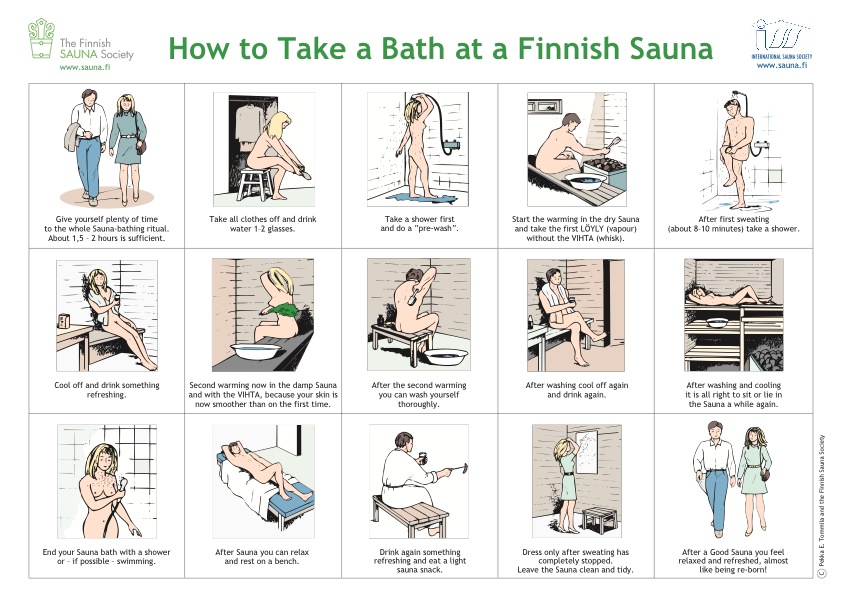
And, given American sensibilities and judgementalism, perhaps no discussion with others about who wore what or not in the sauna.
The First Time

If this is your first time then take it easy, maybe sit on the lower bench if you want (though best to sit higher and stay in for less time), and don’t push how long you stay in the sauna. Different people have different tolerances and the more you do it the more you’ll get to know your body and what you do and do not enjoy.
Sauna can take some getting use to. For many people it can take two to five 3-round sessions to learn to really enjoy it. People who’ve done it for decades often comment that it continues to get better and more enjoyable year after year.
It’s Not Sweat That You Smell
How do you get rid of the smell of sweat if you don’t use soap after your last round?
The smell that we associate with sweat is not sweat but bacteria. Bacteria thrive in warm places like folds of skin or skin sweating under a swimsuit unable to breath. When you sauna and then rinse off with cool water you get rid of bacteria that soap can’t.
Attire
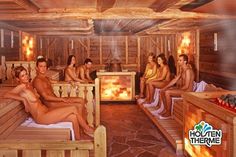
In most countries everyone enjoys sauna together (yes, sexes together) textile-free (nude) and nobody gives it a second thought. People sauna without any textiles because it is more comfortable, more hygienic and brings an element of equality that can’t be achieved in any other way. For many and perhaps most regular sauna goers this is fundamental to good sauna.
“In the sauna nudity is not the objective; it is simply a necessary condition for bathing properly”
– Bernhard Hillila, ‘The Sauna Is’
Other culture’s comfort with nudity seems strange to Americans (just as our socially constructed fear of nudity seems strange to them). But we’re the odd one’s out. We are very much the minority.
Though it comes with some anxiety and even fear, most Americans become comfortable with it once they try it. A common thing for Americans seems to be that the first few seconds is kind of scary (or terrifying according to some) but within a minute it becomes more comfortable and after ten minutes it’s a non-issue. I think once you’ve been around a bunch of textile-free folks in a normal non-sexual environment you don’t think about it. I’ve seen a few thousand people nude at various saunas and therme and never give it a thought.
Interestingly, in a non-sexual environment like a sauna we become less self-conscious about our and others bodies than when we’re wearing a swimsuit.
Why Textile-Free?
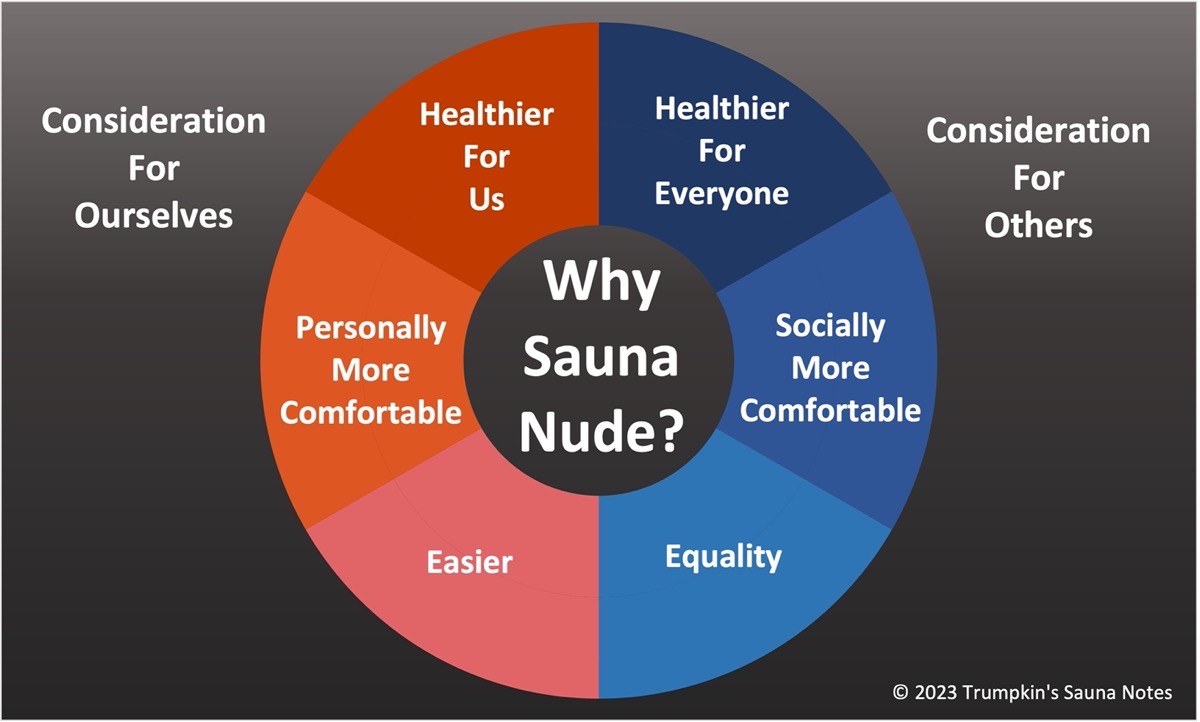
Individually it is more comfortable in the sauna because textiles keep our skin from breathing and cooling us. This can also create uneven heat across our body which isn’t so comfortable. Finns and others say that you cannot experience löyly if you are at all covered. FWIW, everyone I’ve talked to who has done both a few times prefers, often strongly, textile-free.
Outside, exposed skin dries fairly quickly making it enjoyable to stand outside, swimsuits not so much. A wet swimsuit just isn’t comfortable, especially when it’s cold or breezy and doubly worse when dripping cold water down our legs.
The time spent out of the sauna cooling down between rounds is as important as the time spent in the sauna hot room and an uncomfortable cold wet swimsuit can make this time less enjoyable and shorten the amount of time we want to stay outside.
This makes the routine of showering easier and more effective. We’ll shower once or twice per round so 5 to 7 showers isn’t unusual. The sweat glands that result in the most bacteria growth are the apocrine glands in our genitals – rinsing these areas is particularly important, for us and others, and that’s at best difficult in a swimsuit.
For hygiene. First is that having all of our skin exposed to air eliminates the bacteria growth that happens under swimsuits. One of the great things about sauna is that we get rid of all of this bacteria that has built up since our last sauna – and that’s good and healthy for our skin. Second is that textiles can harbor bacteria and this doesn’t rinse out in a simple shower.
Why do public saunas require everyone to be nude?
The majority of public saunas in the world, about 98% based on a quick survey, require everyone to be nude. Why is that?
First, cloth that is not freshly cleaned with unscented detergent can bring in unappealing scents and bacteria. The smell of bacteria, chlorine or other things that swimsuits and the skin under them can harbor can result in a quite unpleasant and unhealthy atmosphere – kind of like cigarette smoke. People who are nude also shower/rinse better than those who are wearing a swimsuit.
Second, most people prefer to be nude in saunas and related facilities. While some are comfortable being nude around others who are not, most people are uncomfortable with this and prefer an environment where everyone is equally textile-free. Interestingly the people in Europe who are quickest to sound the alarm if someone is inappropriately wearing a suit are women – they don’t want to wear a suit themselves and don’t want the discomfort of being around others who are.
Finally, being naked makes us somewhat vulnerable, which is itself good and brings with it a surprisingly critical element of equality. It’s best and most comfortable for everyone then, particularly women, if everyone is equally vulnerable. For many this vulnerability is a key element and benefit of sauna and of the community within a sauna.
One more… The lower bacteria levels allow the use of salt electrolysis systems rather than harsher additive chlorine in pools. This is not only healthier for all of us and eliminates itchy dry skin and hair problems but also eliminates the smell of chloramine from pools.
If wearing something – A short pareo or sarong around the waist can be a good alternative to a swimsuit for both men and women. Some Americans have said that these provide a bit of modesty, a gentler intermediate step to textile-free, and they can open them up a bit to let their skin cool. Note that outside of the U.S. some public saunas will allow these and some not so check first. I think they are always acceptable in private saunas.
For swimsuits, breathability and fast drying are important and you want to cover as little skin as you are comfortable with.
For guys; briefs (‘speedo’) are best but a tight fitting square leg, square cut or boxer (three names for the same thing) is a bit more modest and works well to avoid uncomfortable cold drips. Jammers are probably third best (Tyr’s short Jammers are good) with loose trunks or board shorts the worst.
For more on nudity, the differences between the U.S. and other countries, and the differences in natural, erotic and sexual nudity: Sauna’s, Nudity and Victoria.
Our Sauna
The default for our sauna is whatever people are comfortable with. So nude mixed, women first followed by mixed, suits optional or suits required. We can also setup separate male/female/family times if people want to give it a go in private.
Most important for us is enjoying time with family and friends. We much prefer to sauna with everyone wearing suits than not sauna with friends at all.
For Privacy, the sunken sauna patio is fairly well protected. So throughout the lower level of the house, the sunken patio and the sauna you are welcome to wear whatever you do or do not want. Beyond these a towel, shorts or swimsuit is a good idea.
If it’s dark out then two presses on the ‘exterior’ button will dim the outside lights and then a towel, sarong or robe is sufficient to get safely down to the lake. It’s easy to get comfortable walking around or laying in the sun in the sauna patio and then deciding to go for a dip in the lake so be thoughtful to not wander off without your suit on 🙂
Euro Zone – When people are using our sauna: the sauna, sauna patio and the lower level may be a Euro Zone – you may encounter naked people. Be forewarned if you’re easily offended. 🙂
No Judgement Zone
Many people are comfortable in sauna without clothes, others are not. Some are comfortable around others who are nude, some are not. Some guys are not comfortable with other guys, particularly similar aged guys, seeing their wife nude, some aren’t bothered in the least.
NONE of these are right or wrong. Nobody should ever be judged in any way nor should anyone feel pressured to do anything they are uncomfortable with.
Jewelry & Electronics
It is generally best to remove jewelry before sauna. Some, depending on the material, can get hot and be uncomfortable. VHP’s and similar piercings that are somewhat protected do not generally seem to be a problem and other piercings depend on the material and location. The first time you sauna with a piercing it’s a good idea to keep your mind on it so that you can exit before it gets too hot.
Electronics generally don’t do well in the heat & humidity. Electric saunas in the U.S. are typically not as hot as those in Europe thanks to UL regulations and with lower benches have greater stratification so something like a sport watch or Fitbit is more likely to survive.
Music
This is mostly personal preference in our personal saunas at home. However… One of the great benefits of sauna is a period of quiet and calm in contrast to the noise of daily life. It’s a time to sit quietly, think, contemplate, meditate and relax. A time to let our brain recover (and yes, this is different than recovery while sleeping).
Sauna is social. Someone wearing ears in a sauna is mentally segregated from the rest. They’re not connected. Even when no words are spoken there’s a difference between someone in their own world, disconnected from everyone else, listening to music or a podcast vs someone who’s not and is thus connected with everyone else. People outside the U.S. consider it rude to wear any kind of earphones in a sauna.
There’s a special community vibe in saunas and this is degraded when anyone separates themselves by wearing ears.
Even the quietest earphones and inducers can often be heard by others in the quiet of a sauna. This is quite inconsiderate of others.
Noise generally has a negative effect on our cognitive ability. This is mostly temporary though there is some evidence that continued exposure, such as frequently having louder music in our ears, may result in permanent cognitive decline. Interestingly, music at a lower level and ambient rather than directly in our ears can sometimes improve cognitive ability.
What Europeans Wish Americans Knew.
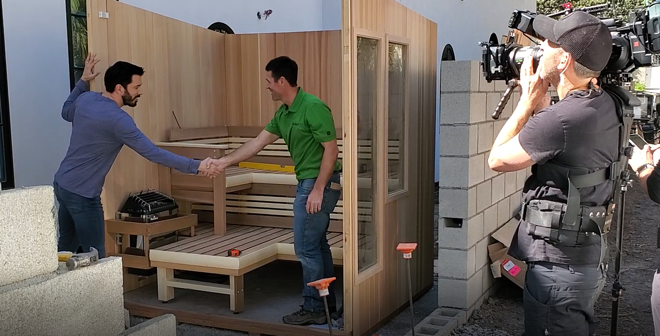
Flatulance is normal. And good downdraft ventilation eliminates all but the sound.
Talking quietly is OK.
Sitting with other people in total silence is OK.
Erections (and the reverse including, to a few peoples horror, the full retreat) are rare but normal, especially in response to heat/cold of sauna rounds for the less experienced. A towel laid across the lap is good etiquette.
Yes, people come in all shapes and sizes with all kinds of attachments and decorations and that too is normal.
Variations On A Theme
Sweden – Sauna is called ‘bastu’. While they often have a routine identical to Finland with similar temps and humidity, they will sometimes do the lower temps and slightly higher humidity of a bio-sauna. Swedes also have a reputation for drinking liquor in the sauna instead of the beer or long drink that Finns enjoy.
Continental (Netherlands, Germany, Austria, Switzerland, Northern Italy, Czechia, etc.) – Continental Europe are well known for four things; a strong smell of aromatherapy or infusions, regimented obedience to sand clocks for how long to stay in, hygiene being critical so bathers are required to be textile-free and place a towel under their feet, and with Aufgus a sauna master who is the only one allowed to throw water on the stones.
Americans should note that these are largely all required textile-free (nude) with sexes together.
Continentals actually have kind of four varieties of sauna; Finnish, Aufgus, Bio and Themed.
First is a sauna that is very similar to saunas in Finland with the primary difference being their routine with aromatherapy infusions and sand clocks. These are largely in private residences, hotels and spas. Similar to Aufguss these will occasionally have lower benches (though this is less and less common with newer all having higher benches) with the expectation that bathers will fan heat and steam down themselves.
Aufguss – A literal translation of Aufguss, pronounced like off-goose, is ‘infusion’ but aufguss is more than that. At it’s heart is using a towel, flag or hand fan to create very specific air movement that both mixes and spreads the infusion and evens out temperature and steam stratification. In the video series ‘Perfect Sweat’, Christine Rose points out that there are three kinds of aufgus;
- Classical or Traditional – Focused on the sauna experience so air movements are purely to mix in the infusions and reduce stratification.
- Modern – Adds music and a bit more flair to the routines.
- Show or Theatrical – Saunamiesters often wear costumes and tell a story.
My personal favorite is simple Classical but I still enjoy Modern and Show aufgus occasionally.
These saunas may be built somewhat different than a typical Finnish Sauna. They are partial performance space (a theatre) for the Aufguss master and part of the ritual is the Aufguss master fanning heat and steam down from the ceiling. This is one instance where lower benches work and where bench height is purely about overall temp rather than evenness. This is often also the case with a less formal Aufguss ritual where anyone in the sauna can perform the fanning with a regular towel (but make sure you know the rules before jumping up and doing it!). A good overview on German saunas is here.
Bio-Saunas (or Bio-Infusion-Saunas) are built the same as a Finnish Sauna with the difference being slightly lower temps and a more constant moderate base humidity. The more constant base humidity can be from a constant drip on the stones or a small steam generator.
Hay saunas are cropping up more and more often, particularly in the Alps. These again are the same as a typical Finnish sauna except for the addition of hay on the walls. Some smaller spa’s will use the same sauna for Finnish, Bio and Hay by varying the temp/humidity and hanging cribs of hay on the walls for the days that it’s functioning as a hay sauna. Hay saunas can have the moderate temps and higher humidity of a bio sauna or the higher temps and contrasting humidity of a Finnish sauna.
Themed Saunas – Featured in larger sauna worlds throughout central and northern Europe. Note that some of the themed ‘saunas’ are actually more similar to caldariums or laconiums rather than saunas.
Larger Sauna Worlds, Sauna Landscapes, Sauna Zones and Sauna Oasis’ are popular throughout Germany and much of central Europe and spreading elsewhere. One example is Badeparadies Schwarzwald with 12 themed saunas and various mineral pools in their Palais Vital that is part of a larger waterpark. Thermé Erding in Germany, The Well in Norway, AquaWorld in Hungary and dozens more. I have been advising a group who are planning to build one in the U.S. patterned after Thermé Wien in Austria.
Continentals generally prefer a more lingering steam compared to Finns so may not achieve the higher peak humidity that Finns prefer. They are sticklers for hygiene including that bathers must be textile-free and place a towel under their feet. You are also more likely to find cold plunge pools in Continental spas vs Finland.
Croatia – I’m told that following the Continental lead and thanks to better quality saunas and more focus on practice that sauna has recently seen considerable growth in popularity in Croatia.
Denmark, Hungary & Slovenia – These are increasingly similar to Continental above but you may be likely to find a wider variety of not-quite-a-sauna experiences. Sauna and similar thermal experiences have been growing in popularity in Hungary over the past couple of decades, particularly in the area around Lake Hévíz.
Many countries can be very strict about no swimsuits or clothes in saunas. Finns will be polite while eyeing the offender, Swedes will quietly say something while Germans will simply forbid entry or point and yell ‘Aus!’. 🙂
Spas & Sauna Worlds – Are popular throughout much of Europe. These often include at least one and often several saunas, steam baths, tepidarium, pools of various temps including cold plunge, salt grottos, relaxation rooms and treatment rooms. Saunas in these are usually well designed. The primary difference is that a sauna world is simply much larger than a spa. These are sometimes divided in to ‘Germanic’ and ‘Nordic’ though often there is little to no difference. Germanic require all bathers to be textile-free while Nordic, particularly in Norway, may allow textiles. Nordic are somewhat more likely to have simpler natural foods.
FWIW, I’m a fan of these and the variety they offer. As much as I like true Finnish Sauna I also enjoy steam baths, aufguss, some of the varieties of infusions and other thermal experiences. That said, my preference is towards the lower key places that focus on the experience like those developed by VAMED rather than the Carnival Cruise like environments developed by Thermégroup.
Here is some insight on the Spa Saunas in the North Tyrol of Italy from our most recent visit.
Other Thermal Experiences
Sauna is but one form of Thermal Experience. Banya’s, Sweat Lodges, IR Cabins, Laconiums, Steam Baths and others fill out the world of Sweat Bathing.
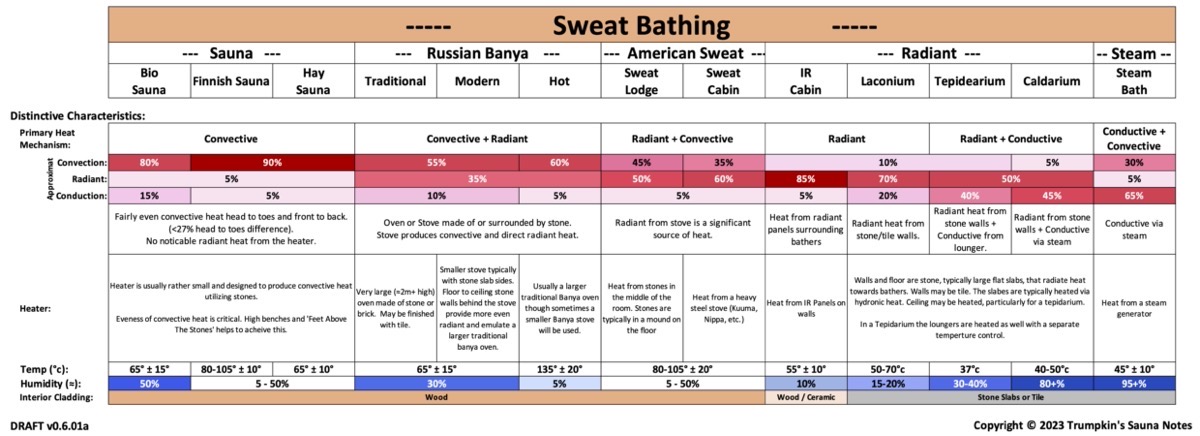
Sauna is unique, along with steam baths, in being almost exclusively gentle convective heat and having no noticeable radiant heat. All other sweat experiences have some noticeable radiant as part of the experience. This is why sauna has become so popular around the world followed by steam baths.
Interestingly, third in popularity, though a very distant third, is likely Laconiums which are primarily radiant heat but a very even and more comfortable radiant than IR cabins and other sweat bathing experiences. Laconiums are becoming standard elements of Spa’s in Europe.
For a brief and slightly more in-depth overview of these as well as hydro and multi experiences see ‘Other Thermal Experiences’ in the menu above.
Official Definition Of A Sauna
International Sauna Association (ISA) – Adopted at the ISA Congress in Aachen, Germany on 5 Aug 1999
Sauna bath – Saunaing is a healthy and relaxing hot air bath, alternating between warming up and cooling off. When taking a sauna, the whole body is heated several times in a wooden-surface room with a typical temperature of about 80-105 º C, measured from a height of about 100 cm above the level of the upper sitting bench. Warming is followed by cooling in the open air or with cold water.
Sauna room – The sauna is a wood-paneled room with stepped benches, a heater with stones, with a temperature of about 80-105º C measured at a height of about 100 cm above the level of the upper sitting bench, and low humidity, which is briefly added by throwing steam.
References:
Saunologia: The Finnish Sauna Basics
GQ: In Search Of The Perfect Sauna
Womens Health: Sauna Vs Steam Room Benefits
The Truth About Sauna: The Truth About Finns. An interesting (and NSFW) video.
The Perfect Sweat. Mikkel Aaland’s 6 part series on some different sweat bathing cultures. Very highly recommended for those interested in the culture of sauna and sweat bathing.
The Upper Bench podcast: Secrets of Sauna Design with Lassi Liikkanen.
And Good Books:
Anyone and everyone who is building or buying a sauna should read Lassi Liikkanen’s ‘Secrets Of Finnish Sauna Design’. I’ve read over 40 books on sauna – this is the most accurate and informative book available.
Other books largely have dated or inaccurate information from a design standpoint but may have useful ideas on sauna routines, ideas for aesthetics or provide some interesting historical context. Books by Alan Konya, Sakari Pälsi, and H. J. Viherjuuri fit this latter area.
‘Finnish Sauna: Design and Construction’ was the go-to book for accuracy prior to Lassi’s.
Various Fun Articles
I cannot attest to the accuracy but overall seem good.
Nordic Perspectives – Ice Bath Guide
Notes
* Avanto and Ice Baths – Never do it alone. Those with diabetes, heart conditions or just general concerns should consult a doctor before jumping through a hole in the ice. While it is considered safe (and healthy) for the vast majority of people there are a few who should be cautious.
https://journals.asm.org/doi/epub/10.1128/aem.02674-09
